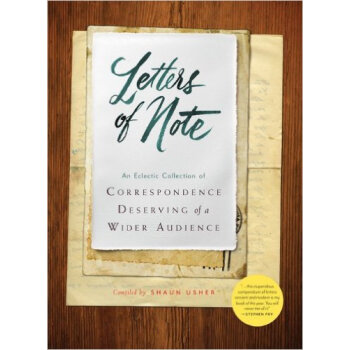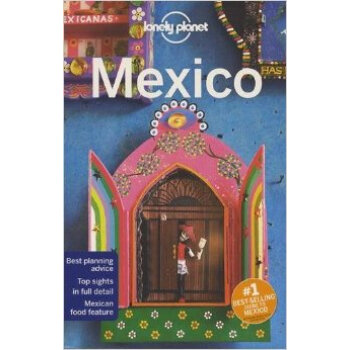![InGenius: A Crash Course on Creativity[天才训练:创造力速成课] [精装]](https://pic.windowsfront.com/19249287/550bf2c1Nae0af825.jpg)

具体描述
内容简介
Is the ability to creatively tackle problems innate or can it be learned? Like most human traits, both answers are correct. Some people are inherently more innovative than others. But, just like maths, or writing, everyone can improve with practice.Tina Seelig, PhD teaches creativity every day in her courses on innovation at Stanford School of Engineering. After ten years of experience, she confidently asserts that not only can creativity be taught but that there are a clear set of tools, skills and approaches that can unlock anyone's creative potential. In InGenius, Seelig reminds us that creativity is not just something that you think about - it is something that you do. It is as natural as breathing, and just as necessary for leading a successful and fulfilling life. Creative solutions are required because the status quo is never good enough, and our goal should always be to push beyond the limits of what seems possible.
Great ideas are needed to solve all the problems we face and to enrich our lives. Whether it is in the conference room, classroom or kitchen, new ideas open up a world of wonderful possibilities. With the tools presented in this remarkable book, we will learn how to pull out all stops to take on the challenges, big and small, that come our way, and to see that every word, every idea, and every moment provides an opportunity for creativity that will enhance our lives.
InGenius is filled with concepts, tools, techniques and stories that reveal ways you can increase your creativity quotient, and that of your groups and organizations. The first half of the book focuses on the inside out - what you can personally do to increase your own creative aptitude and attitude. The second half deals with the outside in - how you can change the local and cultural environment to increase the creativity quotient of your community. InGenius reveals one of the great truths about ideas: it costs nothing to generate amazing ideas, and yet the results have the potential to be priceless.
——This text refers to the Paperback edition.
作者简介
Tina Seelig has a Ph.D. in neuroscience from Stanford University Medical School.She is the executive director of the Stanford Technology Ventures Program, the director of the National Center for Engineering Pathways to Innovation, and is the author of the international bestseller What I Wish I Knew When I Was 20. In 2009, Seelig was awarded the prestigious Gordon Prize from the National Academy of Engineering for her pioneering work in engineering education.
精彩书评
“Tina invites us inside her Stanford University course to reveal that we all have creative potential waiting to be unleashed.” (Ori Brafman, coauthor of Sway and Click )“In a world that’s in constant flux, creativity and innovation are essential qualities for successful executives and industry-leading companies.Tina has shown that we all have the ability to mobilize our creative spirit.” (Chip Conley, Founder of Joie de Vivre Hospitality and Author of Emotional Equations )“Who said creativity can’t be taught? It can, and Tina Seelig has done it! She has created a new model, the Innovation Engine, that will change the way you think.” (Steve Blank, entreprenuer and author of The Startup Owners Manual )In this groundbreaking work, Tina has codified her years of teaching at Stanford and proves that anyone can be creative. (Nancy Duarte, CEO and author of Resonate )Tina has shattered the misconception that you can’t increase creativity.
In this book, she presents breakthrough ideas on how to understand and boost your ability to innovate. (Guy Kawasaki, author of Enchantment and former chief evangelist of Apple )Tina Seelig has written a provocative field guide to 21st century creativity, with her energy and enthusiasm bursting through on every page. We all could use a little extra spark of creativity, and this book helps show the way. (Tom Kelley, author of The Art of Innovation )
“Few people have done as much to champion innovative thinking as Tina Seelig.” (David Kelley, Founder IDEO )“Tina Seelig is one of the most creative and inspiring teachers at Stanford.” (Robert Sutton, Stanford University Professor and author The No-Asshole Rule )“Tina is the most inspirational creativity voice I know.” (Geoffrey Moore, Author, Crossing the Chasm, Dealing with Darwin )“Seelig is a sharp observer and a gentle and thoughtful writer.” (Miami Herald )“Tina Seelig has written a powerful and practical book, jam packed with keen insights for unleashing creativity in yourself and others.” (Peter Sims, author of Little Bets: How Breakthrough Ideas Emerge from Small Discoveries )“inGenius is a fascinating blueprint for any company that’s serious about creating an environment where new ideas can thrive, and many of Seelig’s students doubtless go on to do precisely that.” (Fortune Magazine )Seelig demonstrates that creativity and experimentation are both personal mindsets and values in organizations. inGenius acts as a spark plug for managers and entrepreneurs who want to capitalize on the creativity in their organizations. (Library Journal )
前言/序言
用户评价
我以前总觉得,创造力这东西要么有,要么没有,是个天赋问题。这本书彻底打破了我的固有认知框架,它将“创造力”这个宏大且模糊的概念,成功地解构成了几个清晰的、可执行的模块。最让我印象深刻的是,书中没有仅仅停留在“想出好点子”的层面,而是深入到了如何有效地“筛选、打磨和推销”这些点子。这非常重要,因为一个绝妙的想法如果不能被有效地传达或落地,其价值就趋近于零。它探讨了如何用不同的“语言”去描述你的创新,以适应不同的听众群体——无论是挑剔的投资者,还是不了解技术细节的同事。这种将创意置于商业和沟通环境下的讨论,让整本书的实用价值大大提升。它不仅仅是关于“脑力激荡”,更是关于如何将脑力激荡的成果转化为实际影响力的完整闭环。那种感觉,像是从一个业余的涂鸦者,蜕变成了一个懂得市场和工程实现的创作者。
评分阅读体验上,这本书的节奏控制得极其到位,让人根本无法放下。它不是那种需要你静坐冥想,一点点消化的哲学著作,更像是一场精心编排的、快速剪辑的纪录片,信息密度大到你恨不得手里拿支笔边读边做笔记。我不是一个轻易被出版物风格影响的人,但不得不承认,作者的叙事腔调中透着一股子自信和幽默感,使得即便是讲解一些涉及认知心理学的复杂概念时,读起来也像是听一位非常聪明的同行在分享他的秘密项目。尤其是在涉及如何系统性地积累“素材库”那一章,它提供的视角颠覆了我过去那种“灵感来了才算数”的被动等待模式。它教导的不是如何“等待火花”,而是如何持续地、有目的地去“收集燃料”。读完这本书,我不再觉得创意是某种神秘的、只降临在少数天才身上的特权,而更像是可以通过系统训练和方法论堆砌出来的、可被量化的技能集合。这种赋权感,是许多同类书籍无法给予的。
评分说句实在话,市面上关于“如何变得更有创意”的书籍汗牛充栋,大多读起来都像是同一本印刷出来的复印件,充满了各种陈词滥调和空泛的鼓舞。然而,这本《天才训练》的魅力在于它的“实战性”和那股子不加修饰的直率劲儿。它没有故作高深地使用晦涩的学术语言,反而是用一种非常接地气,甚至带着点儿工程师思维的严谨,来剖析创意的生成过程。我个人尤其欣赏其中关于“限制条件”的论述部分。传统观念总强调要“打破一切限制”,但这本书却巧妙地指出,正是那些看似束缚的边界,往往能催生出最巧妙的解决方案。这种反直觉的观点,让我对过去处理项目时感到头疼的各种约束条件,有了一种全新的敬畏感和利用感。感觉就像一个经验丰富的导师,没有浪费你一秒钟看那些你早就知道的废话,而是直接把你带到最核心的熔炉边,让你亲眼看看火候是如何被精确控制的。如果你寻求的是那种能立刻在你工作流程中找到对应环节并进行优化的“工具”,而不是空洞的鸡汤,那么这本书绝对是值得投资的。
评分这本书真的太让人耳目一新了!我一直觉得自己是个挺能想点子的人,但总觉得有些创意像空中楼阁,抓不住、用不上。这本书的叙述方式,说实话,一开始我还担心会是那种枯燥的理论堆砌,毕竟“速成课”听起来就容易流于表面。可事实完全出乎我的意料。作者似乎有一种魔力,能把那些看似高深莫测的创造力模型,拆解成一个个可以立刻上手操作的工具箱。我特别喜欢它处理“失败”的方式,不再是把它视为终点,而更像是一个必需的、可以迭代的数据点。翻阅的过程中,我发现自己的思维边界似乎被无形中拓宽了,以前面对难题时习惯性地绕开的那些“死胡同”,现在反而成了我首先尝试的突破口。那种感觉,就像是有人递给你一张藏宝图,上面标明的不是金银珠宝,而是你大脑中那些尚未被发掘的潜能区域。它不是告诉你“去创造”,而是清晰地展示了“如何去组织你的想法,让它们自然而然地形成有价值的产出”。对于那些渴望在日常工作或个人项目中注入新鲜血液的人来说,这本书提供的不仅仅是方法论,更是一种思维上的“重置”体验,让人读完后感觉自己仿佛刚刚完成了一次高强度的头脑健身。
评分这本书的排版和结构设计也值得称赞,它非常注重读者的“吸收效率”。不同于那些动辄上千页、恨不得把所有相关文献都塞进来的大部头,它保持了一种恰到好处的紧凑感,仿佛每句话都是经过了千锤百炼的。我特别喜欢它在关键概念出现时,会使用那种简洁而有力的图表或类比来辅助说明,这对于那些习惯于视觉化学习的读者来说,简直是福音。它引导你去质疑那些被普遍接受的“真理”,鼓励读者去探究事物表象下的逻辑结构。我感觉这更像是一本高级思维工具书,而不是一本普通的励志读物。它不是告诉你该怎么做,而是教你如何去“问对问题”,只有问对了问题,答案自然会浮现。读完后,我发现自己看世界的方式都变得更具探究性了,对日常生活中遇到的各种设计和流程,都会不自觉地去分析其背后的设计意图和潜在的改进空间。这种持久的影响力,才是一本好书真正的价值所在。
相关图书
本站所有内容均为互联网搜索引擎提供的公开搜索信息,本站不存储任何数据与内容,任何内容与数据均与本站无关,如有需要请联系相关搜索引擎包括但不限于百度,google,bing,sogou 等
© 2025 book.coffeedeals.club All Rights Reserved. 静流书站 版权所有

![The Liar [平装] pdf epub mobi 电子书 下载](https://pic.windowsfront.com/19262071/rBEIC0_XEycIAAAAAAA2NsB3mqsAAAlxQP1YWIAADZO372.jpg)
![Zeno's Conscience [精装] pdf epub mobi 电子书 下载](https://pic.windowsfront.com/19330726/rBEhUlJbhEUIAAAAAABdd18HaA0AAEG8ANNwCsAAF2P483.jpg)
![This Is Rome [精装] [03--UP] pdf epub mobi 电子书 下载](https://pic.windowsfront.com/19351224/rBEhWFJbk3wIAAAAAABfUvSEhewAAEHdQAYbBUAAF9q041.jpg)
![The Sibley Guide to Bird Life and Behavior [精装] pdf epub mobi 电子书 下载](https://pic.windowsfront.com/19352467/rBEhVFJbhmIIAAAAAAB7Gcdvwn8AAEG-QCiBu4AAHsx130.jpg)
![The Landscape of History: How Historians Map the Past [平装] pdf epub mobi 电子书 下载](https://pic.windowsfront.com/19360181/rBEhWFJbaI4IAAAAAABLsziEe1cAAEG4AHCl48AAEvL846.jpg)
![Message to Adolf, Part 2 [精装] pdf epub mobi 电子书 下载](https://pic.windowsfront.com/19378026/rBEhWFJbmhoIAAAAAABLpDzOxeMAAEHlgNUwjUAAEu8732.jpg)
![Lonely Planet: Central Asia (Travel Guide)孤独星球旅行指南:中亚 [平装] pdf epub mobi 电子书 下载](https://pic.windowsfront.com/19477649/5397cb62Nb278d77d.jpg)
![I Love New York Ingredients and Recipes [精装] pdf epub mobi 电子书 下载](https://pic.windowsfront.com/19489300/54780bf5Ndefc4248.jpg)
![The Future of the Mind The Scientific Quest to [平装] pdf epub mobi 电子书 下载](https://pic.windowsfront.com/19531525/54dbfe2aN32961278.jpg)
![Thomas Heatherwick :Making (Revised(Pb)? [平装] pdf epub mobi 电子书 下载](https://pic.windowsfront.com/19545881/55f7eec0N894a61a2.jpg)
![Lonely Planet Washington, DC 孤独星球:华盛顿 [平装] pdf epub mobi 电子书 下载](https://pic.windowsfront.com/19546267/56025ed2N7888fddd.jpg)
![To Sell Is Human The Surprising Truth About Mov [平装] pdf epub mobi 电子书 下载](https://pic.windowsfront.com/19616195/570799dcN268c1922.jpg)
![The Little Mermaid: The Story of Ariel [精装] [00--05] pdf epub mobi 电子书 下载](https://pic.windowsfront.com/19636797/57b1274eN9c9be536.jpg)
![Don't Throw It to Mo! [平装] [06--07] pdf epub mobi 电子书 下载](https://pic.windowsfront.com/19638374/57844cebNdaa72bbd.jpg)
![An Illustrated Book of Bad Arguments [精装] pdf epub mobi 电子书 下载](https://pic.windowsfront.com/19639063/578342beNbaf4299e.jpg)


![Phishing for Phools The Economics of Manipulati [精装] pdf epub mobi 电子书 下载](https://pic.windowsfront.com/19666634/578349baNb3920303.jpg)
![The Content Trap: A Strategist'S Guide To Digita [精装] pdf epub mobi 电子书 下载](https://pic.windowsfront.com/19687423/5796ce3eN73610821.jpg)
